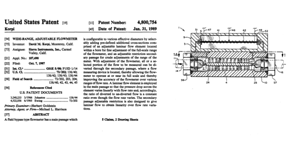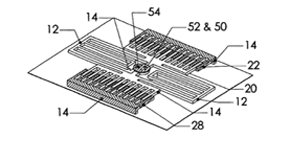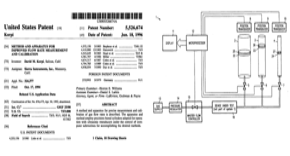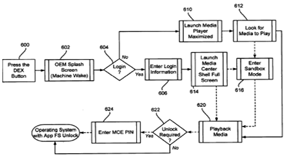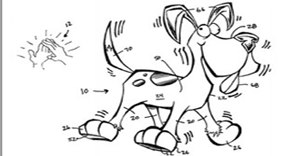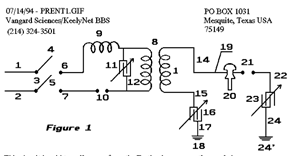PROVISIONAL APPLICATION FOR PATENT FILING DATE REQUIREMENTS
The provisional application must name all of the inventor(s). In view of the one-year grace period provided by 35 U.S.C. 102(b)(1) in conjunction with 35 U.S.C. 102(a)(1), a provisional application can be filed up to 12 months following an inventor’s public disclosure of the invention. (Such a pre-filing disclosure, although protected in the United States, may preclude patenting in foreign countries.) A public disclosure (e.g., publication, public use, offer for sale) more than one year before the provisional application filing date would preclude patenting in the United States. Keep in mind that a publication, use, sale, or other activity only has to be made available to the public to qualify as a public disclosure.
A filing date will be accorded to a provisional application only when it contains a written description of the invention, complying with all requirements of 35 U.S.C. §112(a).
Although the application will be accorded a filing date regardless of whether any drawings are submitted, applicants are advised to file with the application any drawings necessary for the understanding of the invention, complying with 35 U.S.C. 113. A drawing necessary to understand the invention cannot be introduced into an application after the filing date because of the prohibition against new matter. Further, 37 CFR 1.53(c) prohibits amendments from being filed in provisional applications which are not required to comply with the patent statute and all applicable regulations.
To be complete, a provisional application must also include the filing fee as set forth in 37 CFR 1.16(d) and a cover sheet* identifying:
- the application as a provisional application for patent;
- the name(s) of all inventors;
- inventor residence(s);
- title of the invention;
- name and registration number of attorney or agent and docket number (if applicable);
- correspondence address; and
- any U.S. Government agency that has a property interest in the application.
See this video here:
[covertplayersinglevideo trvideoid="ILYvlMusj74" trdisplaytype="5" trnumbervideosdisplay="" trvideoperpage="36" trthumbnailwidth="160" trthumbnailheight="110" trpopupwidth="500" trpopupheight="350" trvideoalign="left" trytautohide="0" trytautoplay="0" trytcontrols="0" trytrelvideo="0" trytshowlogo="1" trytshowtitle="0" tryttheme="dark" trythighquality="0"]
Since June 8, 1995, the United States Patent and Trademark Office (USPTO) has offered inventors the option of filing a provisional application for patent which was designed to provide a lower-cost first patent filing in the United States and to give U.S. applicants parity with foreign applicants under the GATT Uruguay Round Agreements.
A provisional application for patent (provisional application) is a U.S. national application filed in the USPTO under 35 U.S.C. §111(b). A provisional application is not required to have a formal patent claim or an oath or declaration. Provisional applications also should not include any information disclosure (prior art) statement since provisional applications are not examined. A provisional application provides the means to establish an early effective filing date in a later filed nonprovisional patent application filed under 35 U.S.C. §111(a). It also allows the term “Patent Pending” to be applied in connection with the description of the invention.
A provisional application for patent has a pendency lasting 12 months from the date the provisional application is filed.The 12-month pendency period cannot be extended. Therefore, an applicant who files a provisional application must file a corresponding nonprovisional application for patent (nonprovisional application) during the 12-month pendency period of the provisional application in order to benefit from the earlier filing of the provisional application. However, a nonprovisional application that was filed more than 12 months after the filing date of the provisional application, but within 14 months after the filing date of the provisional application, may have the benefit of the provisional application restored by filing a grantable petition (including a statement that the delay in filing the nonprovisional application was unintentional and the required petition fee) to restore the benefit under 37 CFR 1.78.
In accordance with 35 U.S.C. §119(e), the corresponding nonprovisional application must contain or be amended to contain a specific reference to the provisional application. For nonprovisional applications filed on or after September 16, 2012, the specific reference must be included in an application data sheet. Further, a claim under 35 U.S.C. §119(e) for the benefit of a prior provisional application must be filed during the pendency of the nonprovisional application, and within four months of the nonprovisional application filing date or within sixteen months of the provisional application filing date (whichever is later). See 37 CFR 1.78.
Once a provisional application is filed, an alternative to filing a corresponding nonprovisional application is to convert the provisional application to a nonprovisional application by filing a grantable petition under 37 C.F.R. 1.53(c)(3) requesting such a conversion within 12 months of the provisional application filing date.
Converting a provisional application into a nonprovisional application (versus filing a nonprovisional application claiming the benefit of the provisional application) will have a negative impact on patent term. The term of a patent issuing from a nonprovisional application resulting from the conversion of a provisional application will be measured from the original filing date of the provisional application. By filing a provisional application first, and then filing a corresponding nonprovisional application that references the provisional application within the 12-month provisional application pendency period, a patent term endpoint may be extended by as much as 12 months.

